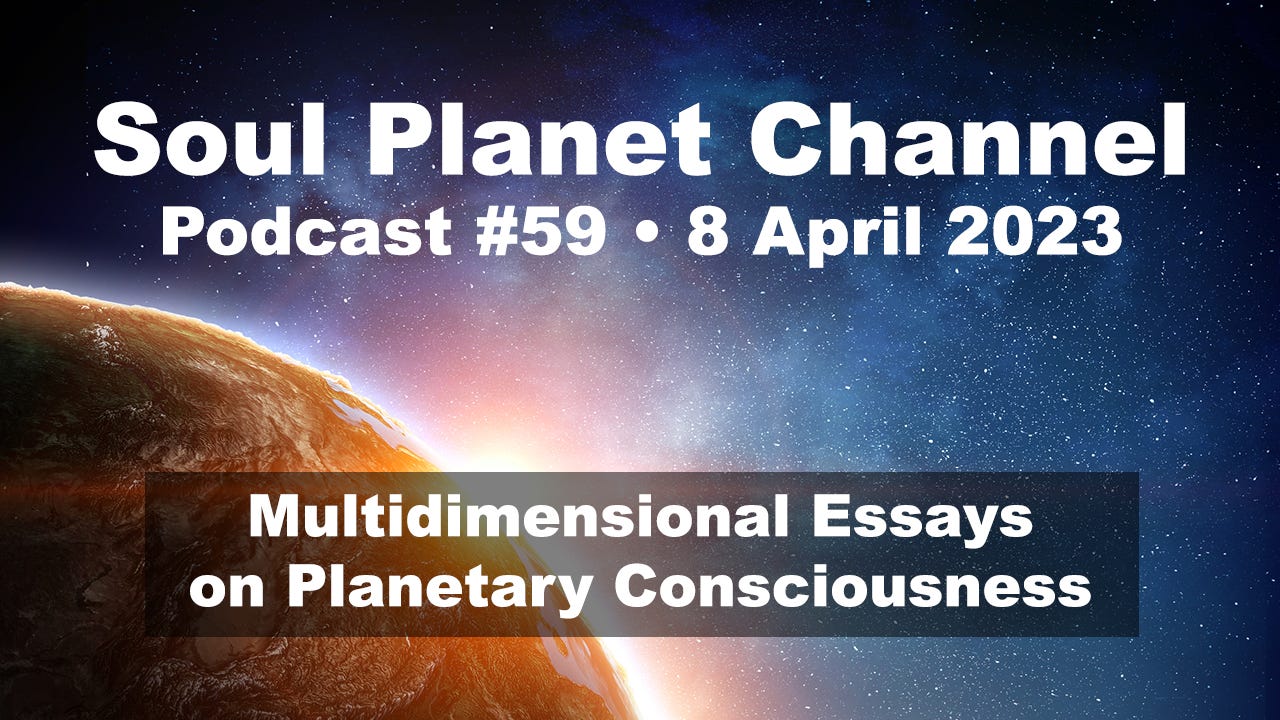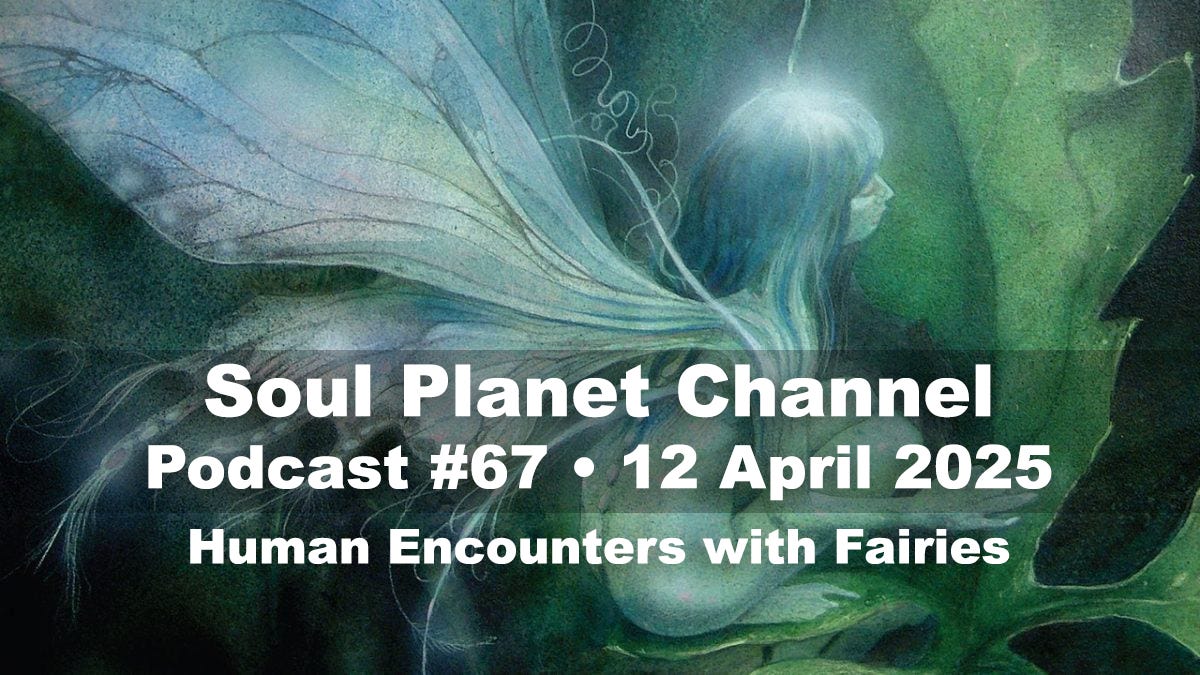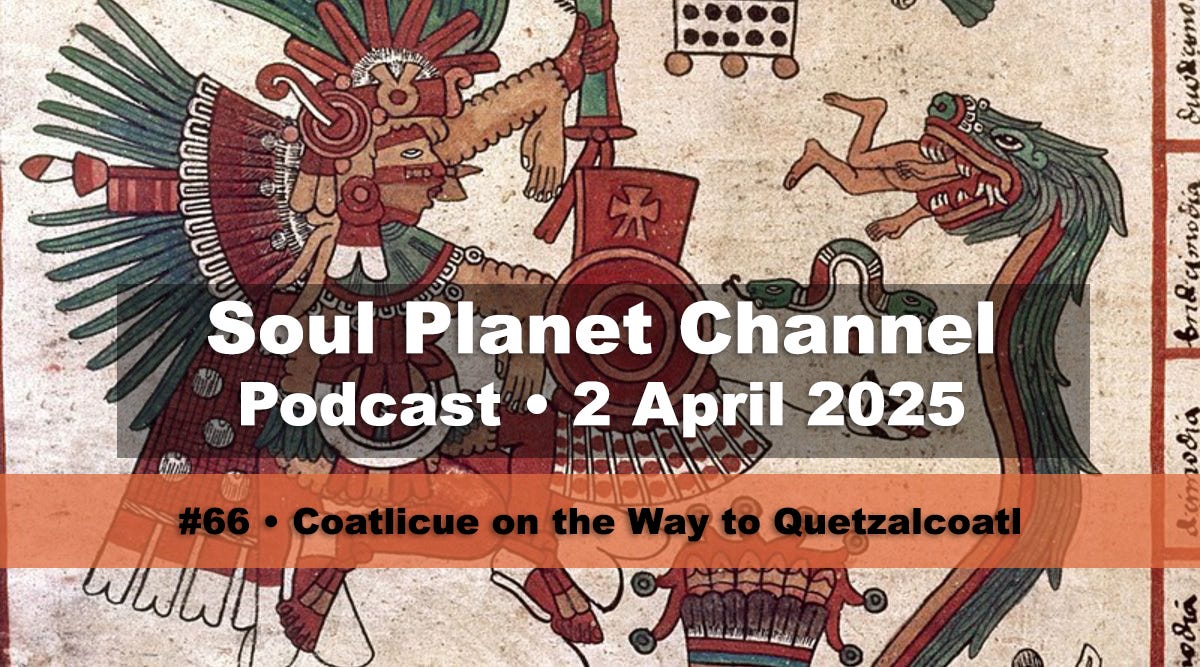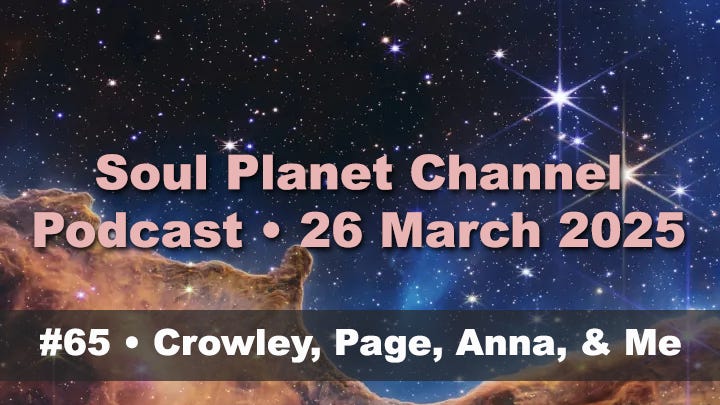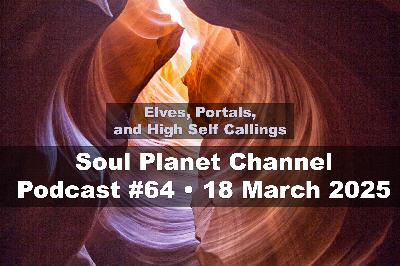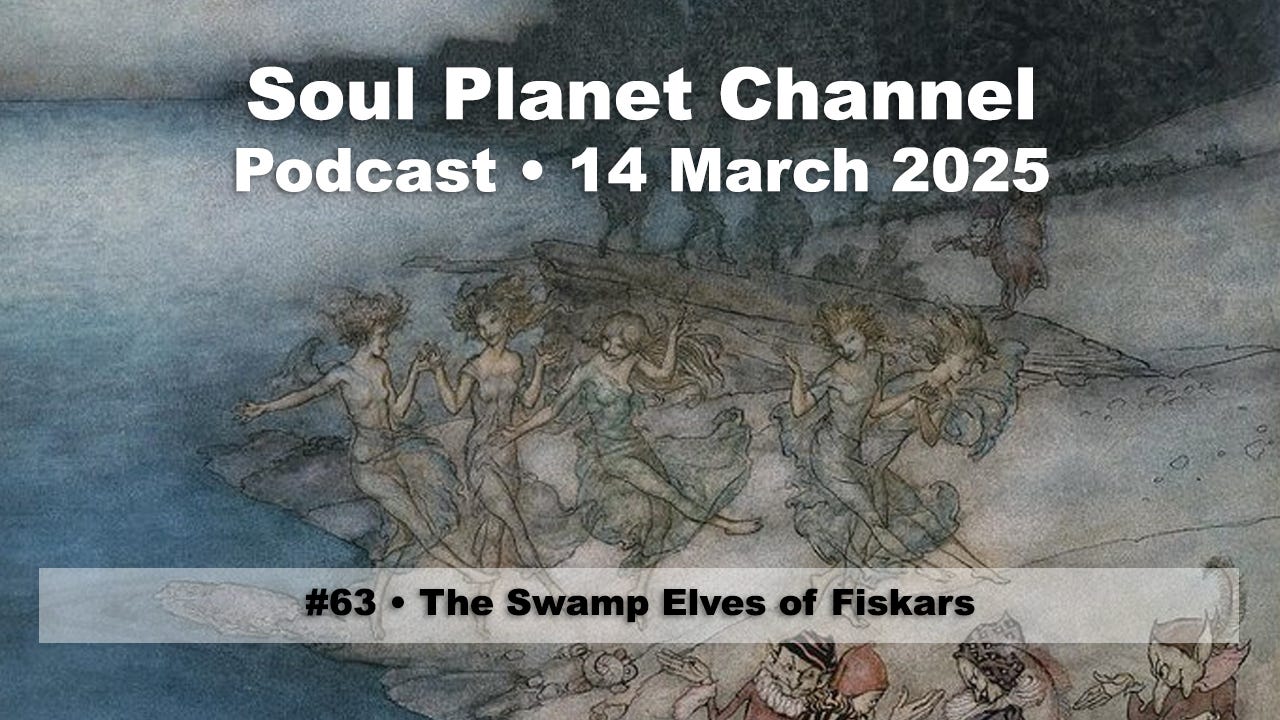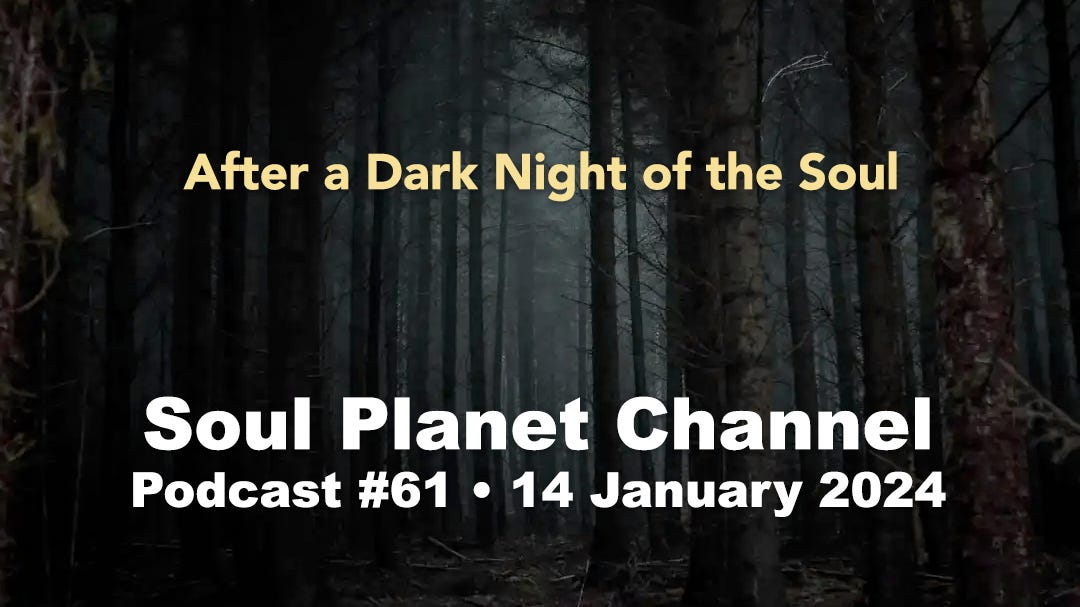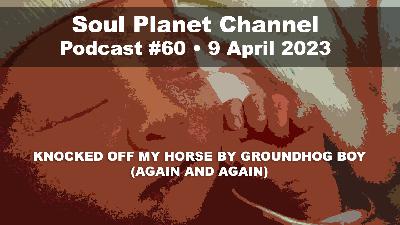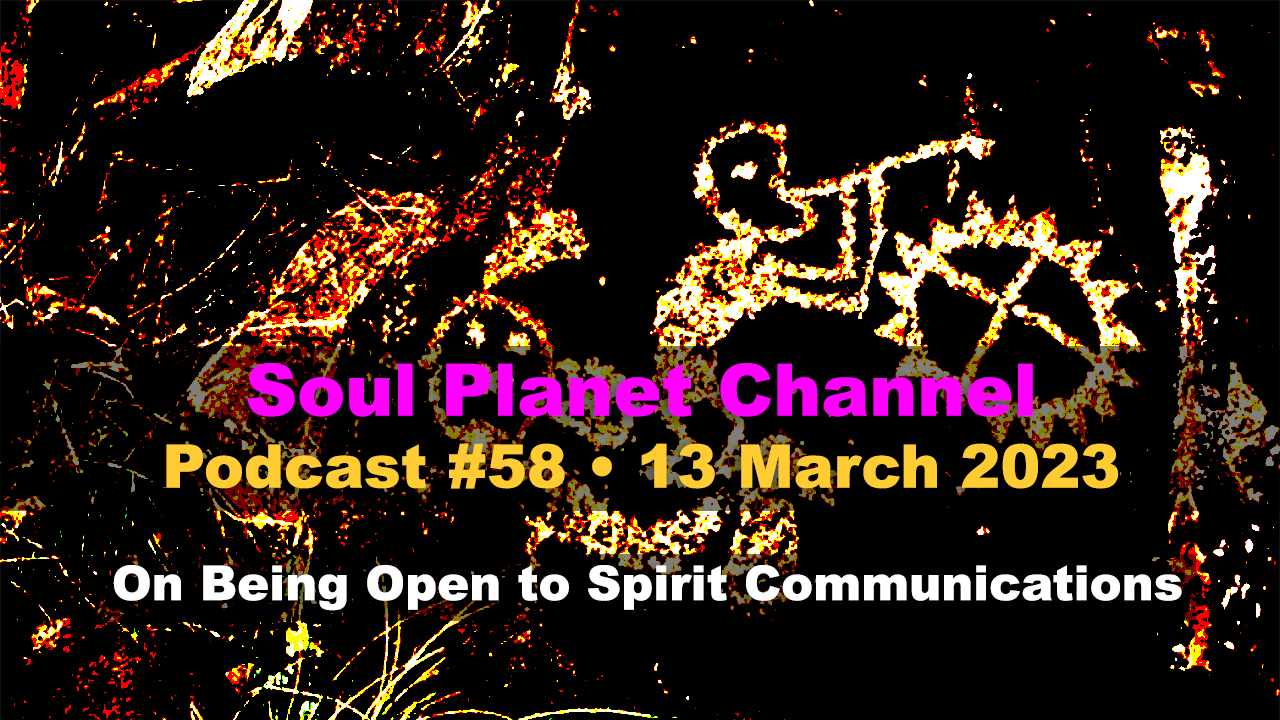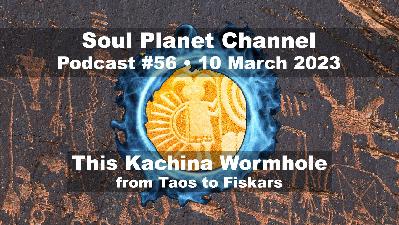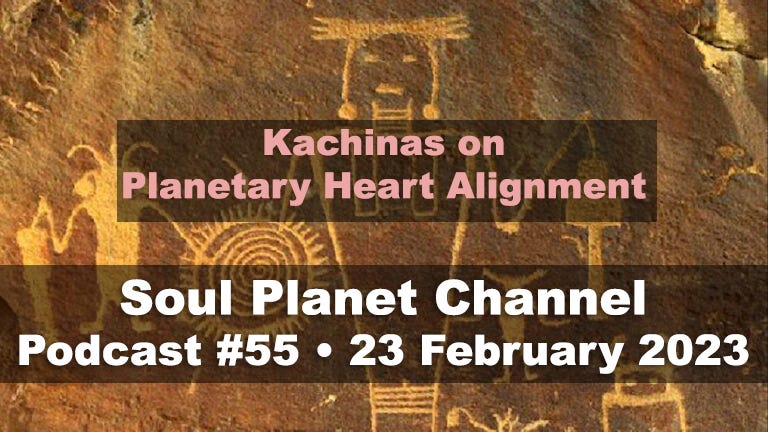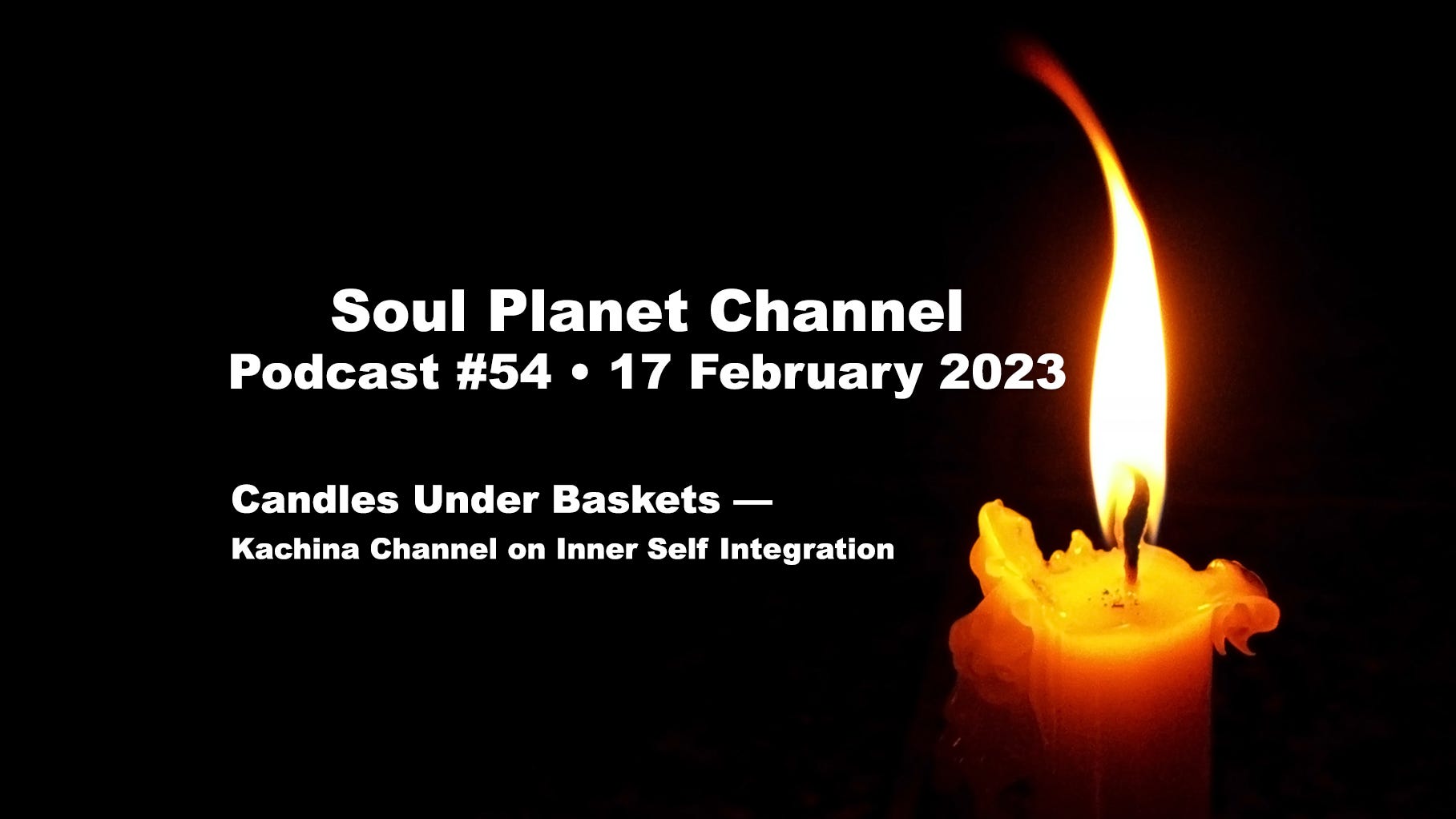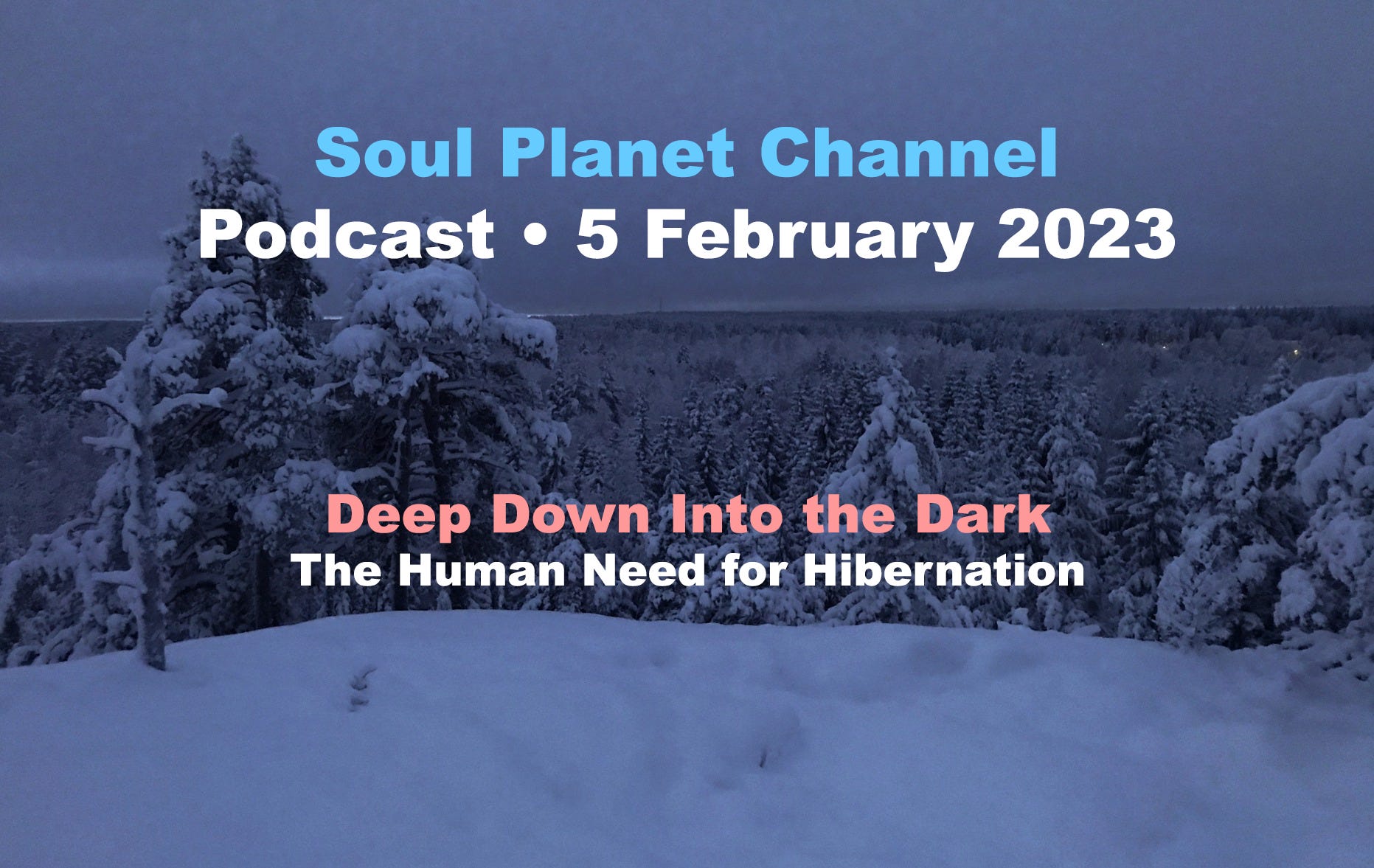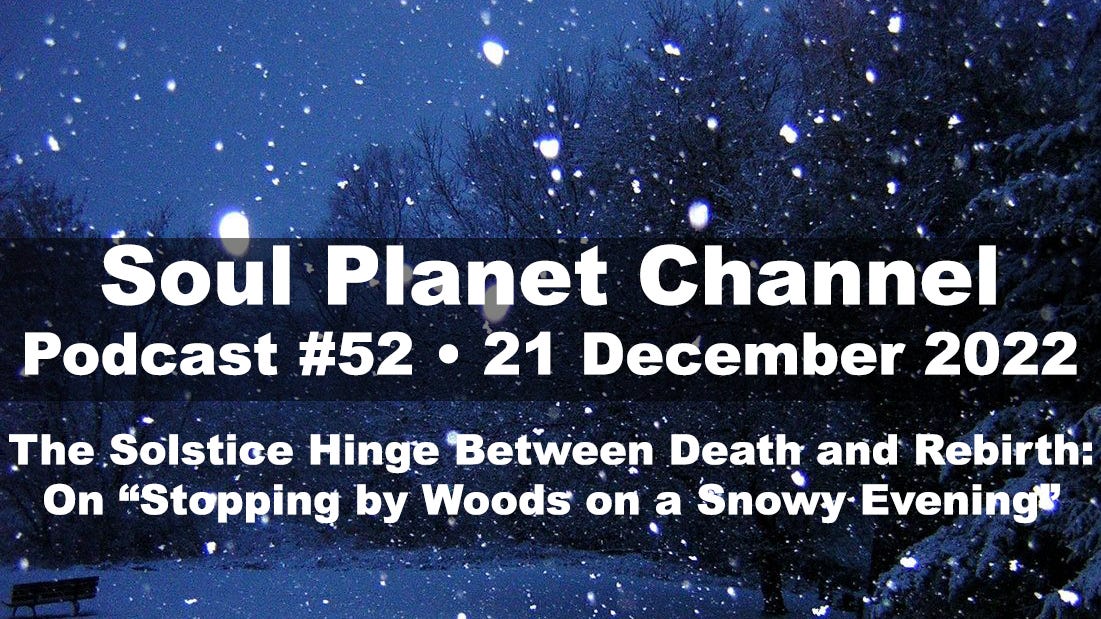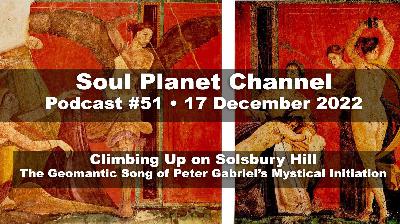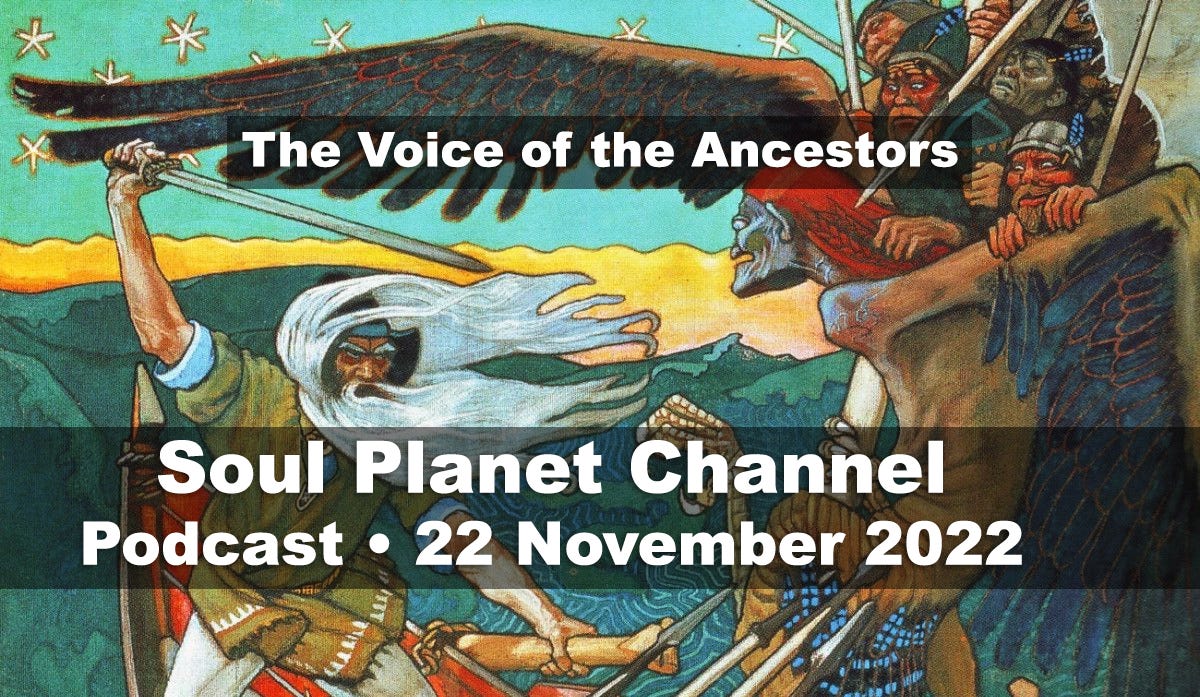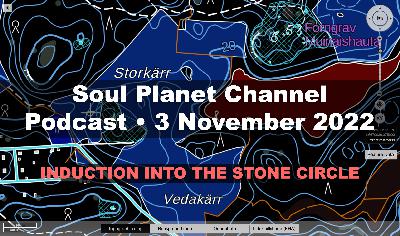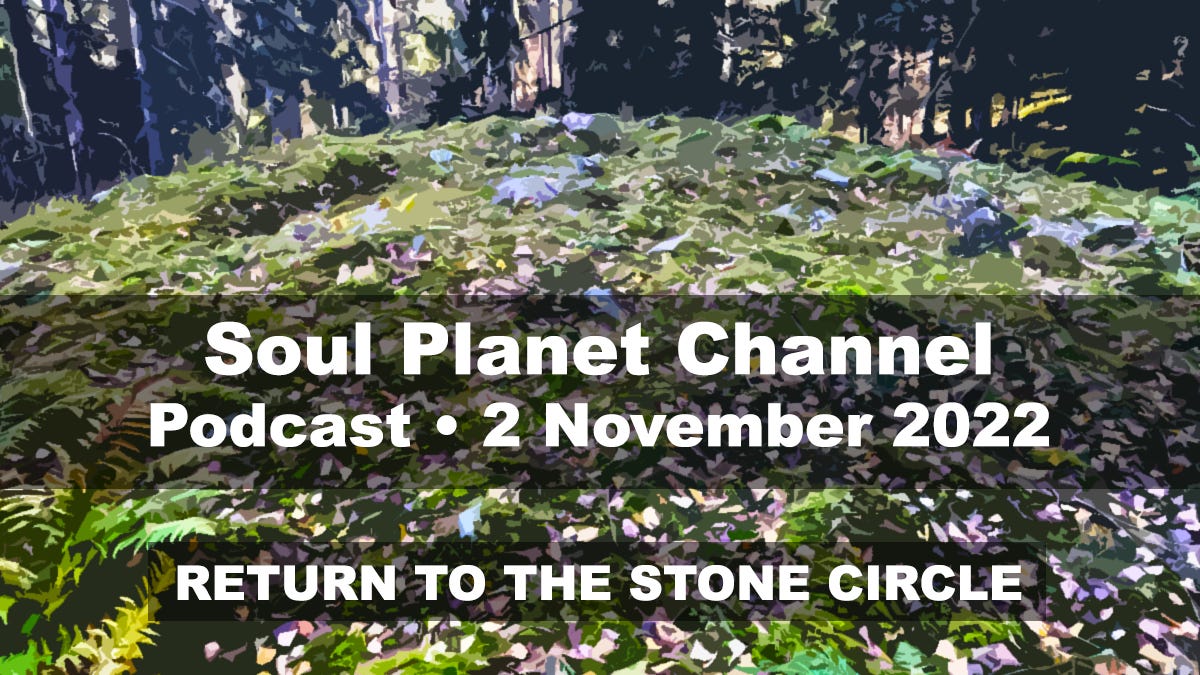#59 • Multidimensional Essays in Planetary Consciousness
Description
Faeries, come take me out of this dull world,For I would ride with you upon the wind,Run on the top of the dishevelled tide,And dance upon the mountains like a flame. — W.B. Yeats
On the 31st of March 2023 I submitted a proposal to the Arts Promotion Center of Finland. I applied as a lifelong writer of Creative Nonfiction, hoping to continue my work in creative essays and books while focusing on a variety of mystical ventures and obsessions.
This very Substack project that I call Soul Planet Channel was one of my primary points of reference in the proposal, for I hope to continue using this medium as the testing ground for my shamanic explorations in geomancy. It occurred to me that the material I presented there would also serve well as a kind of overview of where I’ve seen this blog podcast take me in the past year and how it animates my future and my past. For I discovered that all of my writing throughout all of my career has been focused on various quests for heightened consciousness.
Whether my focus at the time had to do with Marxist theories of ideology or avant-garde poetic notions of defamiliarization or shamanic notions of communications with the spirit world, all of that work, I came to realize, has always been focused on the possibilities for expanding our consciousnesses in order to create a better world for ourselves and for the planet as a whole.
Here in this post I will present an elaborate version of what I had written in my proposal in order to give you and me a sense of that life project so far.
I am Gabriel Hartley, and this is episode #59 of my Soul Planet Channel for the 8th of April 2023. Today’s episode is entitled “My Arts Grant Proposal—Multidimensional Essays in Planetary Consciousness.”
As with all forms of social media these days, if you like this post, please hit the like buttons, share it with your friends, and become either a free or paid subscriber. If you wish to help me out in this work but don’t want to sign up yet for a paid subscription, you can make a one-time donation to this project by clicking the “Buy Me a Coffee” link. In any case, thanks for being here and reading and/or listening to my message!
/////////////////
My plan for this Taike Arts Grant in Literature is to produce a variety of ongoing interrelated projects in creative nonfiction (essays and books). Writing multiple works simultaneously, I see each of these works as part of a much larger life project of what could be called philosophical mysticism or, with a slight inflection, geomantic poiesis. This work is intimately hybrid, taking the form of travel narrative, experimental notes, multidimensional dialogue, spiritual meditation, and (to coin a phrase) poetic habitation. I will try in what follows to give you a sense of what I mean by all these rather unusual terms. As my Substack and Wordpress essays and podcasts show, most of my current work involves mystical investigations into the ancient sites in my own backyard. Here I am continuing the sacred sites work I had done in the U.S. since 2010 (for example, my essay in Journal of Contemporary Shamanism on Kachinas that I met in New Mexico). My narratives of otherworldy engagement inform these latest creative nonfiction works. Here my earlier challenges to allegoresis and academic skepticism form the basis of my own literary stories.
I make these concerns a little clearer when I write the following in my discussion of Robert Frost’s poem “A Star in a Stone-Boat”:
The poem seems to gesture towards without ever mentioning the relational ethos of the communal stone workers of the past who built the complex sacred structures of Stonehenge, Newgrange, Chaco Canyon, and Machu Picchu—aware of the importance of appeasing those Spring-like forces that do not love a wall if it merely separates one human from another. The speaker of ‘Mending Wall’ seeks to mend entire modes of consciousness that remain deaf to the mischievous call of Spring in us that recreates spaces in our walls through which two can pass abreast once more.
If we take this image—worthy of William Blake—seriously for a moment, what a miraculous shift in earthly consciousness are we allowed to witness. The speaker, recognizing his own bodily energetic kinship with such fallen stars, picks this particular one up, spins it in his palm, and creates a marvelous glowing electrical continuum that in itself illustrates the human role of serving as the bridge between heaven and earth. In these brief moments of transcendental connection, this mad local star handler becomes the microcosmic embodiment of our universal cosmic dance.
My Underlying Message
In all of my work over the past dozen years or so, I have come to a firm conviction in what I could now state as my primary credo: All people, all species, all beings (including rocks and oceans and quantum particles) in their infinite variety at root are singular—a physical-spiritual manifestation of our planet as an infinitely evolving singular complexity. We are all expressions of a unified living planetary consciousness, of a complexity-in-singularity. Such a recognition of this intimate planetary identity, I believe, helps us to reduce our drive to war and competition ands all things driven by our illusion of separation. Overcoming this illusion allows for greater unified cosmic consciousness. And exploring the infinite dimensions of this singularity-in-complexity has been my goal for over a decade now and will continue, I imagine, until my dying day.
Teaching as Engaged Art
Much of my earlier writing grew directly out of my teaching as a Professor of English Literature and Language. For roughly four decaades I spent my time teaching literature and creative writing to students from eighth graders through PdD candidates. My classes often explored the bounds of human imagination in tales of encounters with non- or extra-human beings. From ancient sacred texts to fairy tales to classical literary works to contemporary movies, the human imagination has found a wealth of ways to explore experiences with fairies, elves, angels, and ETs. This work led to my presentation entitled “Believing in Fairy Tales,” later appearing in my Soul Planet Channel project, in which I wrote the following key paragraphs:
What if I, like Morpheus in the Matrix movies, were to suggest that you might be living an illusion and that, like Nero, you could choose to take the red rather than the blue pill? What if the world of fairy tales was actually the real world and what we call real is a socially accepted fantasy? And that this might be as good a time as any to travel down that rabbit hole?
Or what if we were to take Joseph Campbell seriously and suppose that we are suffering from the illusion of separation, and that even this distinction between the real world and the fantasy world—the red pill and the blue pill—is itself the ultimate illusion of the dualistic state of consciousness that prevents us from seeing the energies of eternity as they break through into time?
My classroom experience also led me write the essay “Allegoresis and the Eclipse of the Extraordinary,” where I explore how our tendency to read such magical accounts as allegories of this or that particular social condition tends to cut us off from the enchantment of the world around us. I later posted this essay in my Sacred Sites Project blog and plan to do a podcast version here in the future.
Essay as Poetic Habitation
In my current work I argue that the literary work provides space for our habitation within the multidimensional worlds provided by the work itself. Preceding the space outside the work is the space of the work. As we write our way into such works as readers, this poetic habitation provides us with an alternative mode of inhabiting the world we imagine to be outside the poem, which takes up residence in the space opened up as the poem in the world. As we read the poem, we create a space enveloping us in the flow and texture of the poem.
In another post and podcast in this Soul Planet Channel series I wrote the following two paragraphs that attempt to dive into exactly what I mean by Poetic Habitation:
This space that the poem creates and opens up for us becomes a habitable space. We can climb in and take up residence in this space made possible by the poem. This allows us to speak of modes of poetic habitation. Or, given the collective, social nature of language and the written-spoken media, maybe we should say poetic cohabitation. The poem creates a space where we can cohabit with the poet and with other readers and communities of people who might not have even read the poem but whose collective existence rises up as a fact of our newfound habitat. A poem about farm boys brings those farm boys into the present moment, the present space of the poem—they bring these various characters into presence from within the space and texture of the poem. The poem provides for the presencing of the outer world around us.</

